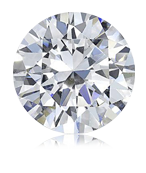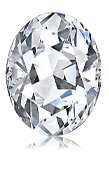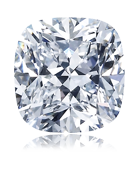Time for a history lesson in diamonds
July 16th, 2020

The most popular shape diamond since the 1800s is the ROUND cut, however it wasn't until 1919 that the round diamond as we know it today first appeared. Russian mathematician, Marcel Tolkowsky, calculated the precise number of cuts necessary to create the ideal diamond shape - 58 facets - more than any other kind of cut.

Originally dating back to the 14th century, the OVAL cut that's popular today was created in 1957 by diamond cutter Lazare Kaplan. An oval cut diamond of the same weight as a round will appear larger because of its larger surface area.

The story of the MARQUISE shape diamond is one of love and royalty. In the 18th century, King Louis XV of France commissioned a jeweler to cut a diamond in the shape of the lips of his favorite mistress, Jean Antoinette Poisson, the Marquise de Pompadour. Its shape and cut have been perfected through the ages and it now features 58 brilliant sparkling facets.

The PEAR shape, sometimes referred to as the "teardrop cut", was first introduced in the mid-1400s. This diamond combines the round and the marquise cuts into one unique shape, with a rounded bottom and tapered, pointed top.

The CUSHION CUT diamond's origin can be traced back to the 1800s, when it was referred to as the "mine cut," named after the Brazilian diamond mines. While similar in shape, today's cushion cut has 64 facets while the "mine cut" had 58. The many facets that make up the cushion allow for more light to flow through the stone, making it one of the most brilliant of all cuts. Cushion cuts also retain their natural color better than other diamond cuts, making it one of the most popular styles today.

EMERALD cuts have been around for thousands of years. First primarily used on emerald gemstones, diamond cutters eventually began to incorporate the cut into diamonds as well. The name "emerald cut" was not used until the 1920s, when it reached the peak of its popularity.

The ASSCHER shape diamond was named for the Dutch company that created it. It's similar to the emerald shape but in a square format. The classic-looking Asscher has 58 facets and cropped corners that give it the appearance of an octagon. In 1999, the cut was improved upon, creating the Royal Asscher cut. Using modern diamond-cutting technology, the new cut raised the crown and added more facets for a total of 74, while keeping the brilliance and classic look of the original design.
Visit Windsor Jewelers and take a look at some sparkling pieces of history!





